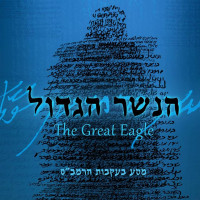HaNesher HaGadol Filming Locations
HaNesher HaGadol Filming Locations
Jerusalem is a city in the Southern Levant, on a plateau in the Judaean Mountains between the Mediterranean and the Dead Sea. It is one of the oldest cities in the world, and is considered holy to the three major Abrahamic religions—Judaism, Christianity, and Islam.
Safed is a city in the Northern District of Israel. Located at an elevation of up to 937 m, Safed is the highest city in the Galilee and in Israel. Safed has been identified with Sepph, a fortified town in the Upper Galilee mentioned in the writings of the Roman Jewish historian Josephus.
Córdoba is a city in the southern Spanish region of Andalusia, and the capital of the province of Córdoba. It was an important Roman city and a major Islamic center in the Middle Ages. It’s best known for La Mezquita, an immense mosque dating from 784 A.D., featuring a columned prayer hall and older Byzantine mosaics. After it became a Catholic church in 1236, a Renaissance-style nave was added in the 17th century.
Tiberias is an Israeli city on the western shore of the Sea of Galilee. Its Old City holds important Jewish and Christian pilgrimage sites including the Tomb of Maimonides and Abulafia (Etz Chaim) Synagogue. The waterfront features the restaurant-lined Yigal Allon Promenade, a marina and a fish market. South of the city, Hamat Tiberias National Park is home to famed mineral hot springs dating to antiquity.
Fes is a northeastern Moroccan city often referred to as the country’s cultural capital. It’s primarily known for its Fes El Bali walled medina, with medieval Marinid architecture, vibrant souks and old-world atmosphere. The medina is home to religious schools such as the 14th-century Bou Inania and Al Attarine, both decorated with elaborate cedar carvings and ornate tile work.
HaNesher HaGadol (2017)
When delving into the world of Maimonides, the greatest Jewish adjudicator and philosopher in history, one thing becomes clear: if he were to suddenly awake and appear in the State of Israel of 2017, he would most certainly be baffled. Like every myth, and especially one created 800 years ago, everyone today has his own Maimonides, right wing or left wing, intellectuals or rabbis, whether orthodox, religious nationals, or secular. But "The Great Eagle" himself remains partly as mystery; what were his influences? In what language did he speak and think? What were the events that shaped his life? Above all, what remains of his perceptions in Israel and present-day Judaism?
